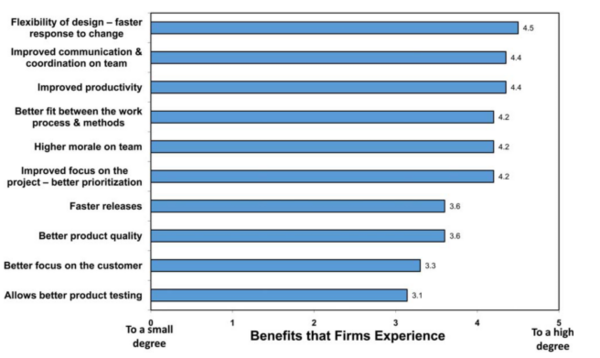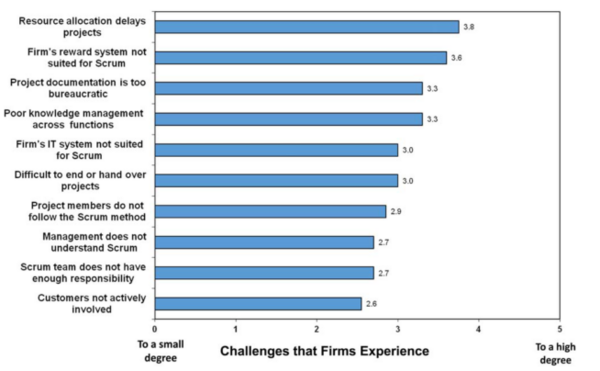The Stage-Gate Model/phase-gate process
Contents |
Abstract
Developed by Bashir Isse
History
Model
Application
Adoption and Applicability
Several top performing companies in the 1980s were using some variation of the stage-gate model for new product development and innovation management even before the model was actually named as stage-gate by Cooper in 1990.[1] The application of the model in the fields of new product development and innovation management was adopted by more and more companies as the years passed. Characteristically, the adoption rate has reached 70-85% among the leading U.S. firms. When focusing on the world’s top corporate research and development companies (Booz Allen Global Innovation 1000) there is an 100% adoption of some form of the stage-gate model (data from 2006).[2]
Moreover, the model is applicable in a variety of industries including chemicals, financial services and consumer nondurables.[3] It is notable that the stage-gate model is also used to manage a variety of projects. Apart from the product development, innovation management and management of change/process improvements, the model is also used to manage a variety of other projects. That is why some companies have adopted the model as a general project execution model. For example, NovoNordisk is applying a variation of the stage gate model as a project execution model.[4] That is the case because the Stage-Gate model is a simple and intuitive model that can be easily modified to include more or less stages and gates and different sets of elements at the gate so as to accommodate the needs of a specific project, program or portfolio.
Gains from implementing stage gate

The gains of implementing stage-gate, or similar structured process to manage innovation and new product development have been studied throughout the years. In a study from 2012 from Cooper and Edgett [6], comparing best and worst performers in new product development, from a wide variety of industries (sample of 211 best performing companies), shows that the best performers were two to three times better at successfully completing a new product development process than the worst performers. Nearly all the best performers (90% of them) had a stage-gate model in place, or some other similar structured process, to tightly manage the new product development process. The gap between best and worst performers was so big that it was argued that only applying a stage gate model was considered, in itself, a best practice.
Regarding the combination of the stage gate-model with the agile methodology, Boehm and Turner [7] after examining some case examples from the IT sector, concluded that the combination of the two methodologies favors the combination of agility with discipline that future projects are going to need. Another study including cases from the software industry has also concluded that the application of an agile stage-gate hybrid has been successful. [8][9] However, the software industry is quite different from the development and manufacturing of physical products, so the question of whether such a combination would be beneficial from the manufacturing world has been posed. As a response, Sommer et al in 2015, revealed the benefits coming from the use of an agile - stage-gate hybrid process in the manufacturing world (although a small sample was used – 5 danish manufacturing firms), which can be seen in the picture.
The most obvious benefit is the faster response to changing requirements for the product, which enables the companies to have an overall more adaptive and flexible new product development process.
An example in LEGO GROUP
The Lego Group in Denmark incorporated the agile-scrum methodology into the stage-gate process of the company for the first time in 2011, in a project for a highly innovative new educational product, called "Story Starter". The results of the new method application were remarkable. The product launch was completed in just 12 months and later Lego applied the methodology to all the new product development processes.
"Story Starter" was intended for children in elementary schools and would help them become confident writers and readers. The project was initially managed through the traditional stage-gate model of the company, although a substantial amount of iterations with customer interactions was needed to develop the product. The decision of incorporating a digital documentation tool into the product was the cause of the use of an agile - stage-gate hybrid. The Digital Solutions group in Lego used an agile methodology to all their software development projects, so the new members of the "Story Starter" development team (coming from digital solutions) introduced the agile methodology to the rest of the team. The team decided to apply the agile methodology to the entire product development process, but senior management, being more conservative, insisted in integrating the agile methodology into the stage-gate model. The new hybrid model was applied to stages of development and implementation of the traditional stage-gate model. Several agile tools were used like sprints, scrums, visual scrum boards, burn-down charts, a prioritized project backlog and sprint planning meetings. Extensive customer testing took place through several sprints, during the development stage.
Main gains of the new hybrid model, as the team members noted, were the increase in team communication which led to decrease of misunderstandings and increase of the team productivity, as well as the improved work flow during the project, result of an enhanced security feeling due to the often scrum meetings.
Limitations

The typical Stage-Gate model had some limitations that the new versions of the model have tried to overcome. It has been accused of being too linear and rigid to handle innovative and dynamic projects and not adaptive and flexible enough to meet the new reality of projects and the changing Voice of Customer (VoC). Moreover, a lot of criticism has been about the decision-making points and the criteria used for decision making. It was found that in many cases financial criteria were overweight and that decisions were based on faulty financial analysis due to limited data availability.[11]
For the latest version of the hybrid agile stage-gate model, several challenges seem to lie ahead, although there is still little research on the new model and few adoptions from the industry side, up to today. Some of the challenges that should be investigated further are the following:[12]
- Defining a done sprint: defining a done sprint in the software industry is easier than in the physical manufacturing world, as not every product can be equally divided in smaller parts. Rather the sprints may focus on different versions of the product, but still this is hard to be exactly defined (it can be a drawing, a completed checklist, a physical prototype)
- Resource allocation: The agile methodology uses dedicated team members that work full time for the project. This seems to be in contrast with the cross-functional setup of the typical stage-gate model.
- Planning of the project: the stage-gate model is a long-term plan model, while the agile methodology is based on very short-term planning. In fact the stage-gate model serves as a visible roadmap for the project team.[13] It may be hard to ensure the deliverables at the gate and the focus/purpose of the project.
- When should agile be used?: the question here is whether agile is suitable for all projects, or if it works better with the riskier projects.
Furthermore, the challenges linked to the involvement of senior management and the validity and credibility of the decision-making process still remain. As the gatekeeper role is key for the stage-gate model, appointing the appropriate gatekeepers, who really attend meetings, contribute to the decision-making process and improve the gate effectiveness is very important for the success of the model.[14]
Finally, the trends in innovation management should be considered more carefully. Open innovation seems to be an interesting way of innovating that companies will probably explore more in the years to come. The stage-gate model should be examined in an open innovation framework and potential improvements should be considered.[15]
Annotated Bibliography
R. G. Cooper, “Stage-gate systems: A new tool for managing new products,” Bus. Horiz., vol. 33, no. 3, pp. 44–54, 1990.
In this paper, Cooper explains the best practices of the best innovators in the 1980s. By studying the top performing companies the stage-gate model emerged. The model is explained deeply, and a typical model is given, characteristic of the manufacturing industry.
R. G. Cooper, “Invited Article: What’s Next?: After Stage-Gate,” Res. Manag., vol. 57, no. 1, pp. 20–31, 2014.
Cooper describes the Triple-A system in detail. He explains why each attribute is necessary and again how the industry has modified the model to meet the needs of new product development.
R. G. Cooper and A. F. Sommer, “The Agile–Stage-Gate Hybrid Model: A Promising New Approach and a New Research Opportunity,” J. Prod. Innov. Manag., vol. 33, no. 5, pp. 513–526, 2016.
The Agile stage-gate model is described in this paper. Furthermore, an introduction to the agile methodology is given, an example of the application of the new model in the industry and finally some suggestions for further improvement.
M. Cross and S. Sivaloganathan, “A methodology for developing company-specific design process models,” Proc. Inst. Mech. Eng. Part B J. Eng. Manuf., vol. 219, no. 3, pp. 265–282, 2005.
A very interesting paper for practitioners, about adapting the general stage-gate model to a specific company/need. The design tools proposed are really remarkable and greatly supplement the stage-gate model.
Interview of Robert G. Cooper from Planisware
In this interview, Cooper answers a lot of interesting questions and gives a very good overview of the model and its newest variations.
References
- ↑ R. G. Cooper, “Stage-gate systems: A new tool for managing new products,” Bus. Horiz., vol. 33, no. 3, pp. 44–54, 1990.
- ↑ Booz Allen Hamilton, “Booz Allen Study Finds the World’s Leading Corporate Innovators Stepped Up R&D Spending in 2006,” 2006. [Online]. Available: http://www.businesswire.com/news/home/20071016005463/en/Booz-Allen-Study-Finds-Worlds-Leading-Corporate.
- ↑ R. G. Cooper, “Stage-gate systems: A new tool for managing new products,” Bus. Horiz., vol. 33, no. 3, pp. 44–54, 1990.
- ↑ “Project Execution Model (PEM), APPPM WikiPage,” 2015. [Online]. Available: http://apppm.man.dtu.dk/index.php/Project_Execution_Model_(PEM). [Accessed: 30-Sep-2017].
- ↑ R. G. Cooper, “Invited Article: What’s Next?: After Stage-Gate,” Res. Manag., vol. 57, no. 1, pp. 20–31, 2014.
- ↑ R. G. Cooper and S. J. Edgett, “Best Practices in the Idea-to-Launch Process and Its Governance,” Res. Manag., vol. 55, no. 2, pp. 43–54, 2012.
- ↑ B. Boehm and R. Turner, “Balancing agility and discipline: evaluating and integrating agile and plan-driven methods,” Proceedings. 26th Int. Conf. Softw. Eng., pp. 2–3, 2004.
- ↑ D. Karlstrom and P. Runeson, “Combining Agile Methods with Stage-Gate Project Management,” Management, no. June, pp. 43–49, 2005.
- ↑ D. Karlstrom and P. Runeson, “Integrating agile software development into stage-gate managed product development,” Empir. Softw. Eng., vol. 11, no. 2, pp. 203–225, 2006.
- ↑ R. G. Cooper, “Invited Article: What’s Next?: After Stage-Gate,” Res. Manag., vol. 57, no. 1, pp. 20–31, 2014.
- ↑ R. G. Cooper, “Invited Article: What’s Next?: After Stage-Gate,” Res. Manag., vol. 57, no. 1, pp. 20–31, 2014.
- ↑ R. G. Cooper and A. F. Sommer, “The Agile–Stage-Gate Hybrid Model: A Promising New Approach and a New Research Opportunity,” J. Prod. Innov. Manag., vol. 33, no. 5, pp. 513–526, 2016.
- ↑ R. G. Cooper, “Stage-gate systems: A new tool for managing new products,” Bus. Horiz., 1990.
- ↑ R. G. Cooper and S. J. Edgett, “Best Practices in the Idea-to-Launch Process and Its Governance,” Res. Manag., vol. 55, no. 2, pp. 43–54, 2012.
- ↑ J. Grönlund, D. R. Sjödin, and J. Frishammar, “Open Innovation and the Stage-Gate Process: A Revised Model for New Product Development,” Calif. Manage. Rev., vol. 52, no. 3, pp. 106–131, 2010.
- ↑ Template:Cite book